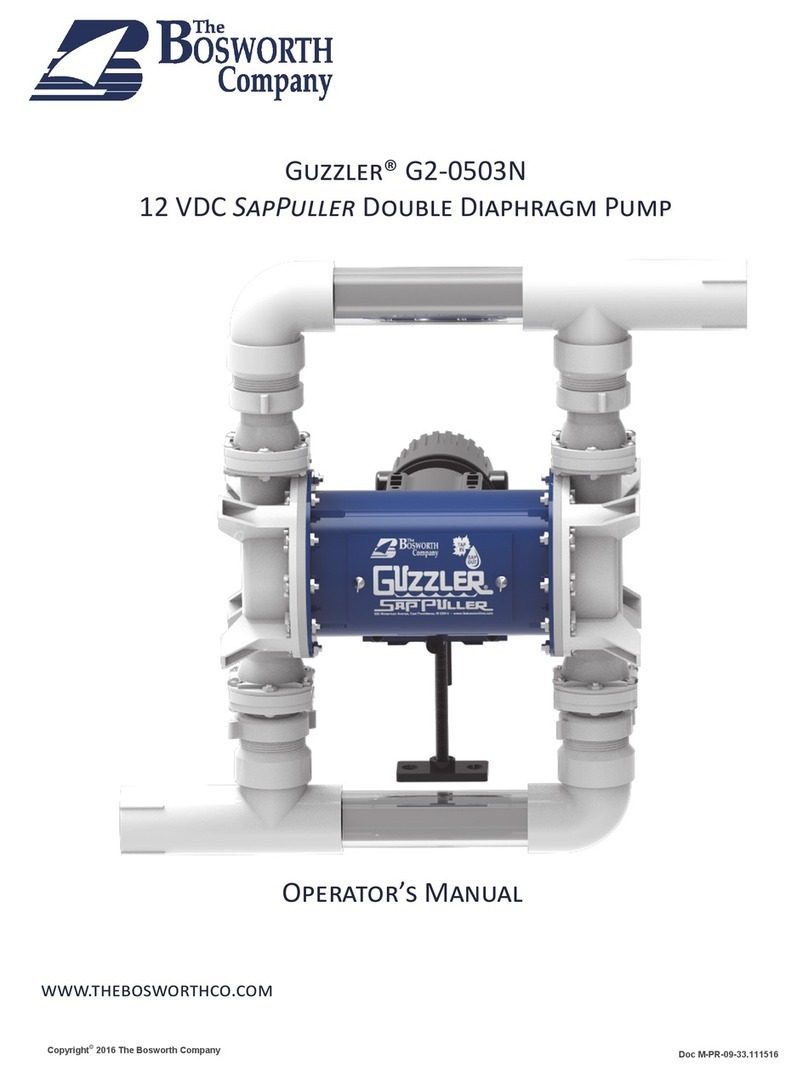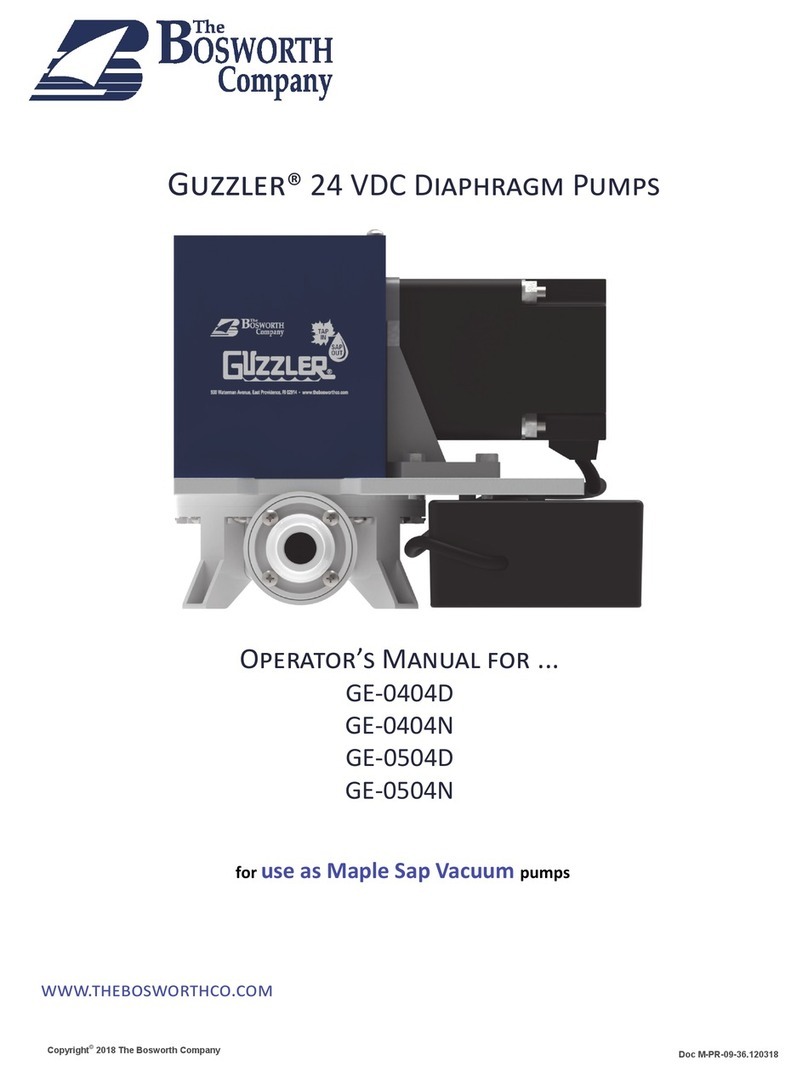
P S / T B O
4
The Bosworth Company
Doc M-09-
Use a Strainer to Keep Foreign Materials and Ice from Entering the Pump
Early in the season, sap may contain small wood or plastic shavings that can foul or tear the pump valves or dia‐
phragm. (Even sharp ice chips, upon entering the pump, can create the same problem.) We recommend installing a
strainer of the kind pictured in Figure 4 to keep such material from being drawn into the pump. A strainer with a
transparent cap will allow you to see when the filter screen needs to be cleaned so that it does not obstruct sap flow
into the pump.
Recirculation Line for Best Vacuum
Guzzler pump valves seal best when wet. To achieve the best vacuum with your Guzzler, we recommend that you
install a small (1/8” to 1/4” in diameter) recirculation line from your collection tank back to the inlet of the Guzzler
(Figure 4). Regulate this backflow of sap by installing a small shutoff valve where the line connects to the inlet.
When the pump is running, open the valve to allow a small amount of sap to flow back from the collection tank into
the pump. This ensures the valves remain wet and seal optimally. With a recirculating line, some users have in‐
creased vacuum to as much as 28 in Hg.
T B O
Eliminate Leaks for Best Vacuum
Your Guzzler Pump can develop 19‐28 in. of Hg vacuum, depending on whether the valves are dry or wet. Because
the Guzzler is a low‐cfm (cubic feet of air per minute) pump, even very small leaks can prevent the pump from deliv‐
ering its rated vacuum. Maintain your tap lines to keep your system tight and address problems that can cause vacu‐
um leaks.
Isolate the Pump to Find Cause of Vacuum Loss
If you experience a loss of vacuum in your system – as registered by the gauge near the pump – slowly turn the shut‐
off valve to isolate the pump from your mainline. DO NOT SHUT THE VALVE SUDDENLY, AS PUMP DAMAGE MAY
RESULT. If the gauge begins to return to normal operating vacuum, then the pump is working properly, and the
source of the leak is somewhere in your sap lines or taps.
If the pump fails to recover normal vacuum, then the pump is the source of the problem. Inspect the pump dia‐
phragms and/or valves for any holes or tears. In the case of the valves, check for and remove any material that may
have entered a pump body and lodged in the valve, preventing the valve from proper opening and closing.
Keep Ice from Forming Inside Pump
Sap can freeze within the pump body. If the pump is turned on when there is ice in a pump body, it will result in
damage to various pump components, including the pump body, valves and diaphragm. If there is a risk of freezing
conditions, we recommend that you disconnect the pump from your sap lines when the pump is not running and
drain any excess sap from the pump. Some users install a small heat lamp in the enclosure with the pump to prevent
ice from forming when the pump is not operating.
Drain Sap if Removing Pump from Mainline
To shut the pump down and disconnect it from the mainline, first slowly close the shut‐off valve to isolate and main‐
tain any vacuum in the mainline. Then, turn the pump off. Disconnect the pump from the mainline, using Quick
Couplers if you have used these for your pump‐to‐mainline connection. Turn the pump back on briefly to flush any
remaining sap from it. Finally, tilt the pump to drain any remaining sap.




























